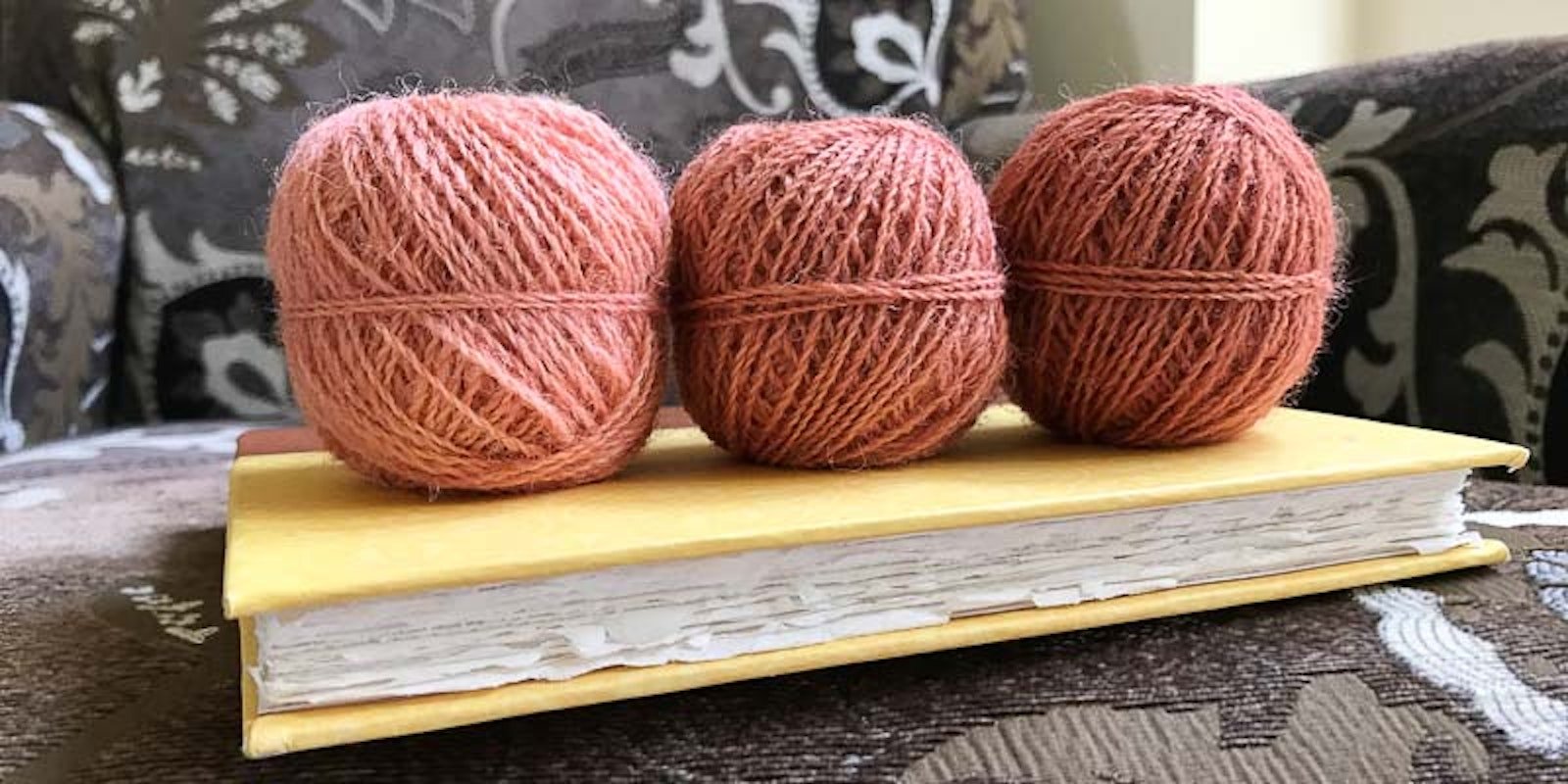I’ve had a madder matter brewing, and it is beautiful. The Welsh Llanwenog fleece I shared in my last post has made its way through madder dyepots as I experimented with seemingly endless natural-dyeing options. I love to explore and sample, and here is where my adventure stands today . . .
This Llanwenog fleece from Ewe Spinning Me a Yarn has been a dream to process. The average staple length is 4" and the locks popped open easily when carded without any pre-teasing. I then set to spinning with a medium amount of twist and a worsted draw, producing a sturdy, 2-ply yarn. I’m spinning for bandweaving, which often (but not always) works best with a high-twist yarn. “How much twist?” is a spinner’s perennial question. Samples will answer that query. Personally, I prefer to start with a medium twist and can increase it in subsequent samples.
 (Left) Madder roots from Eugene Textile Center steeping in the sun. (Right) Tiny sample band using unbleached cottolin and Llanwenog one-day madder sample.
(Left) Madder roots from Eugene Textile Center steeping in the sun. (Right) Tiny sample band using unbleached cottolin and Llanwenog one-day madder sample.
After plying, I broke the skein into smaller, fifty-yard skeins for dye samples. I used an alum mordant on my newly washed skeins and set the madder roots to pre-soak for a while. Using a cool dyeing method, I dropped the mordanted skeins into the madder dyepot, set the pot in the sun, and covered it with a clear piece of plastic. I removed skeins after one day, two days, and four days. (See image at top.) Next, I may try heating the dyepot, changing the mordant, pre-rinsing the roots, shifting the pH, and so on.
Madder reds and oranges are commonly derived from the roots of Rubia tinctorum and Rubia cordifolia. Since madder was and is used in many parts of the world, there are fascinating differences in how the dyestuff, dyeing process, and pH can be used to produce an impressive range of colors. Maiwa has great resources on its website about madder and natural dyeing if you are interested in learning more.
Discover natural dyes!
Check out the following resources to learn more about using natural dyes:
Natural Dye Series: Exploring Palettes from Fresh-Leaf Indigo, Madder & Woad eBook
Nature’s Colorways: Conjuring the Chemistry and Culture of Natural Dyes
Natural Dyeing with Dagmar Klos Online Workshop
Natural Dyeing with Dagmar Klos Video Download
Overdyeing with Natural Dyes with Dagmar Klos Video Download
Dyeing with Indigo: Easy Techniques with an Ancient Dye Video Download
Spin Off Fall 2010
Kate Larson, editor of Spin Off, teaches handspinning around the country and spends as many hours as life allows in the barn with her beloved flock of Border Leicesters.
Originally published October 20, 2017; updated October 16, 2023.

